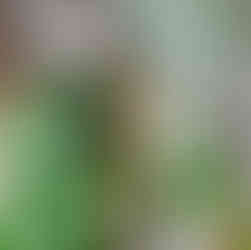Top interior design tips for styling with indoor plants
- Bliss Interiors
- Apr 22, 2024
- 6 min read
Updated: May 16, 2024
Welcome to the fresh, green world of living home decor
Styling with indoor plants can add much more than a pop of greenery to your home – plants can be a key interior design element. Readily available and affordable, lush plants and foliage bring natural shapes and textures, life, and vitality to your indoor spaces.
Here are some professional tips and ideas on how to display your living home decor for maximum effect, room by room.

Indoor plants and your health
Let’s begin with you! Remember that decorating your home with living plants improves more than the aesthetic of your home–indoor fauna has remarkable health benefits too.
Considering that the average person can spend up to 85% of their time indoors, the quality of our indoor environment significantly impacts our mental and physical well-being. Incorporating healthy, fresh, and scented greenery into our homes can reduce stress and anxiety by connecting us to the natural world.
With so many benefits, even a few strategically placed plants create a calm, healthy ambience, and what's not to like about that?
Where to position plants for maximum effect
A thriving plant signifies a healthy environment, so be bold! The more opportunities there are to "see green" indoors, the better your home will feel.
Consider the following:
● Place a plant or two around your computer on a desk and work areas.
● Stand a plant in front of a mirror for a double whammy of greenery.
● Dress windowsills with potted plants. Daylight will filter through the greenery to lift and freshen a room.
Put plants at different heights

Even a tiny plant can draw the eye and create a connection with nature. Don't underestimate low coffee tables – they are a perfect spot for weird, wonderful and curious succulents. Cluster several small plants on the table to create impact and ignite botanical conversation.
Given that a typical coffee table is often in line with the TV, a few plants create a softer foreground focal point. In contrast to harsh light from a television, resting your vision on living greenery during dull programmes or adverts will calm the soul and give your screen-tired eyes a little respite.

Putting plants on the floor
Don’t be afraid of positioning the pots directly on the floor (place the pot on a plant saucer to protect your flooring).
In their native environment, nearly all plants grow from the ground up. If you cluster a mixture of tall and small plants on the ground, you'll observe their foliage at naturalistic levels, just as they appear outdoors.
The art of styling with indoor plants

Gone are the days of a lonely African violet plonked on a side table. Look carefully at other spaces and voids which could be filled with vibrant foliage.
For instance, if you have a large expanse of wall or empty, unused space, celebrate it with a show-offy, glossy monstera (Swiss cheese plant).
For narrow spaces or a mid-century vibe, the rubber plant is back in favour, and with good reason. Its single central branch and large Jack-and-the-Beanstalk glossy leaves will lift any dull corner or wall. Rubber plants are also the perfect tall plant for a small home.
Bookcases cry out to have trailing plants and pops of greenery tucked between the books, and a single plant in a tasteful pot will make a statement on a plain shelf.
Plants in halls and stairwells

For busy thoroughfares such as hallways and landings, think about plants that can withstand being brushed past. In nature, they are designed to flex in the breeze. You can liven up a staircase by placing smallish plants directly on the steps.
For halls with high ceilings, think trees! An exotic weeping fig tree and olive trees are contenders. They'll withstand pets and passers-by, and a little light pruning will stop them from becoming unruly.
Adorn narrow hall consoles and windowsills with living foliage. Ferns are nature's great survivors, are incredibly robust.
Foliage in the kitchen

Much like a bowl of tempting fruit, a vibrant splash of greenery is pleasing to the eye.
Enhance your kitchen island or table with plants that are edible or suited to close inspection. Search out interesting succulents and bonsais, and for edibles, try a miniature lemon tree or chilli plant.
Supermarket herbs are a fabulous opportunity to enhance your plant displays. Keep attractive containers handy and pop your basil, rosemary and mint in them for an instant hit of greenery and scent in amongst your other plants.
Healthy fauna in the bathroom

Certain species thrive in moist, misty environments. Maidenhair and asparagus ferns do exceptionally well in bathrooms. Their soft, feathery foliage creates soft shapes in the most private rooms.
If your bathroom window is overlooked, try replacing blinds (or, heaven forbid, net curtains) with a natural 'green screen' of indoor plants by cramming the windowsill with lush foliage, or make a real green screen statement by suspending plants in front of the window. Try the white plant hangers from Wayfair which come complete with a rail.
You can also create a visually appealing display at different heights with floor standing pot planters with legs. This will keep precious surfaces clear but bring some green pizazz to dead floor spaces and hard-to-reach corners. Try the black metal stands like these from from Dunelm for a contemporary look.
If floor space and surfaces are scarce, a smart way to add style in compact bathrooms and en suites is to suspend plants from wall or ceiling brackets. Have some fun and go 'jungle'!
Lighting houseplants and throwing shadows
When evening settles, and as the natural light fades, plants take on a different role. If you light upwards, the plant's shadows create a whole new dimension.
Simply clamp a small spotlight beneath your plant to throw natural shadows on the walls and ceiling. Come nightfall, the humblest plant can bring a new level of intrigue to the room: bushy and small-leaved plants cast soft, feathery shadows, while large or spiky plants throw dramatic shapes.
Play around with the angle of the lights. A crafty little tweak here and there will create wildly different effects.
Unobtrusive clip-on spotlights are available from Ikea or Habitat. As a safety precaution, be sure to unclamp electric lights when you're watering the plants.
Using plants to connect interior and exterior worlds

Houseplants near windows and exterior glass doors help to soften the line between outdoors and indoors. They invite the eye to look beyond the interior and create the illusion of spaciousness.
Go for tall plants or clusters of plants on a table next to glass doors and full-length windows.
Consider putting hardy houseplants outside near the patio doors or windows. Figs, olives, lemon trees all do well in the summer and can be brought indoors when the weather becomes chilly.
Hmmm. Which indoor plants should you buy?

Trust your gut! If you see a plant you like, for goodness sake, don't dally. Just treat yourself.
Once you begin thinking about decorating and styling your home with greenery, random plants will call out to your soul or make you smile for no reason. You'll find the perfect spot as soon as you get it home.
Investing in fully grown plants can be pricey, so buy them when they're little and nurture them. Most tropical plants have impressive growth spurts during the spring and summer. Feed and water them, and you will be rewarded with lush leaves.
Houseplant accessories
With so many people succumbing to the indoor plant bug, the houseplant accessories market is booming.
Seek watering cans and plant misters that match your interior design vibe and keep them on display. Hortology has plant care accessories that can grace any living room.
Plant hangers
If you're hanging plants from the ceiling or beams, Macrame is undergoing a revival. You can even make your own and put your creative skills to work. For stylish and fun macrame kits for under £10, try Argos.
For a minimalist look, wire and metal plant hangers give your plants the thoroughly modern treatment. Check out Wayfair's hanging planter set.
My tip is to pay attention to the look of the underside of the plant pot and ask yourself if it's attractive and reject pots that have unattractive bottoms!
Pots and containers
The pots and containers you use are essential to your interior design. Choose similar plant-pot styles, stick with a general theme… and select them with gritty intention.
Bitten by the houseplant bug
If you're new to the secret world of using plants in your interior design, you'll soon discover how addictive it is. Before you know it, tinkering with a houseplant's position, misting foliage, and repotting restricted plants will become a profoundly relaxing and rewarding pastime.

I'm Julie Bliss of Bliss Interiors & Architectural Design.
I hope this blog post gives you the confidence to use plants intentionally as part of your interior design and home styling. Follow me for more design tips, or drop me a line. I'd love to hear from you.
















